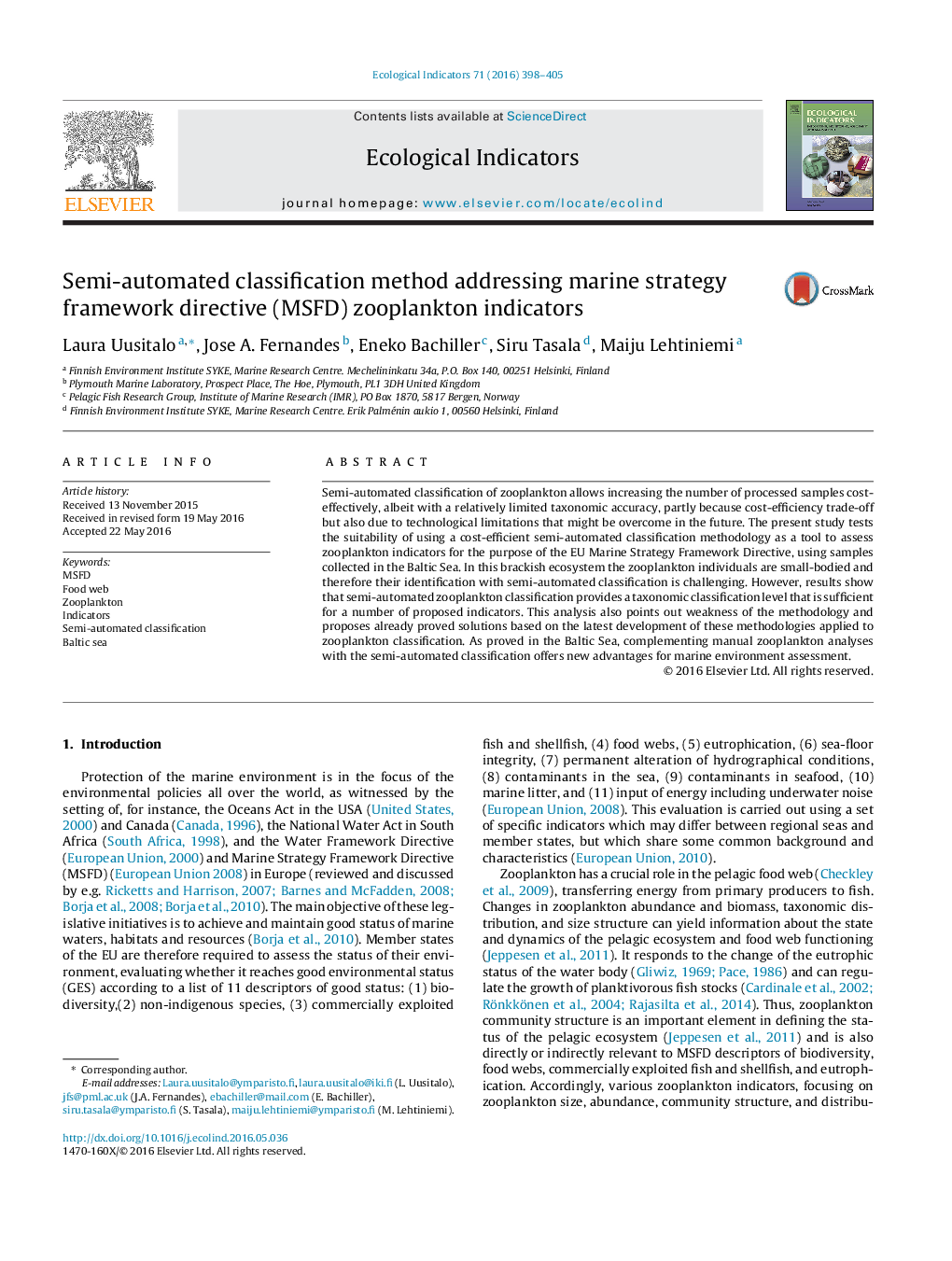| Article ID | Journal | Published Year | Pages | File Type |
|---|---|---|---|---|
| 6292973 | Ecological Indicators | 2016 | 8 Pages |
Abstract
Semi-automated classification of zooplankton allows increasing the number of processed samples cost-effectively, albeit with a relatively limited taxonomic accuracy, partly because cost-efficiency trade-off but also due to technological limitations that might be overcome in the future. The present study tests the suitability of using a cost-efficient semi-automated classification methodology as a tool to assess zooplankton indicators for the purpose of the EU Marine Strategy Framework Directive, using samples collected in the Baltic Sea. In this brackish ecosystem the zooplankton individuals are small-bodied and therefore their identification with semi-automated classification is challenging. However, results show that semi-automated zooplankton classification provides a taxonomic classification level that is sufficient for a number of proposed indicators. This analysis also points out weakness of the methodology and proposes already proved solutions based on the latest development of these methodologies applied to zooplankton classification. As proved in the Baltic Sea, complementing manual zooplankton analyses with the semi-automated classification offers new advantages for marine environment assessment.
Related Topics
Life Sciences
Agricultural and Biological Sciences
Ecology, Evolution, Behavior and Systematics
Authors
Laura Uusitalo, Jose A. Fernandes, Eneko Bachiller, Siru Tasala, Maiju Lehtiniemi,
